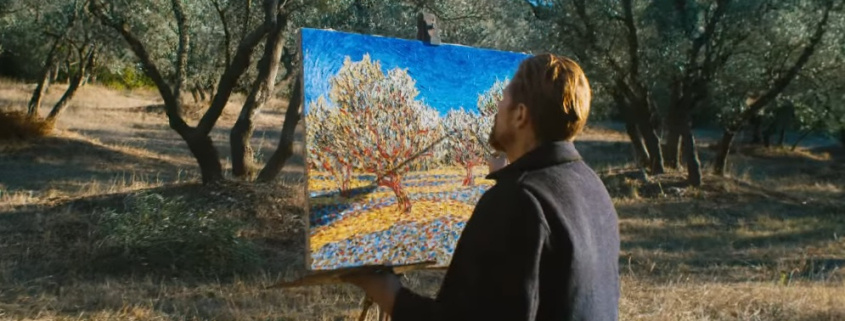The New Renaissance: Artists live through film

Most people, well-versed in art history or not, will have heard the names Vincent Van Gogh and Michelangelo. In fact, their life stories were so extraordinary that, in 2018 and 2019, respectively, films about each artist’s life were released: “At Eternity’s Gate” by Julian Schnabel and “Sin” by Russian director Andrei Konchalovsky.
More than a clear-cut biography of Michelangelo, “Sin” explores a deeper layer of the sculptor’s mentality and the processes by which he came to create irreplaceable masterpieces. According to Variety’s review, the film leans heavily into the artist’s contradictions: He was at once divine and a scoundrel, brilliant and crazy. The range of qualities this singular man possessed was key to his unique outlook on the world, the review notes.
One of the central elements to Michelangelo’s character (played by Alberto Testone), which is beautifully expressed through poetic dialogue and visual images in the film, is his need to continue searching for something. At one point, Michelangelo mutters to himself, “I wanted to find God, but I only found Man.” His need to transcend reality and the tangibility of life as it appears is the drawing force of Michelangelo’s sculptures.
“Sin” focuses on this internal discovery rather than the artworks themselves. The sculptures are a byproduct of Michelangelo’s internalization of the physical world, and by using this depiction of Michelangelo, it creates a deeper understanding his artistic genius.
“At Eternity’s Gate” uses a similar method of storytelling to explore the mindset and genius of Vincent Van Gogh.
According to a review by Time, actor Willem Dafoe, who portrays Van Gogh in the film, describes it as “impressionist portrait” more than a biopic. One of the most fascinating depictions of Van Gogh in the film are in his moments of periodic breakdowns when he seems to dissociate from reality.
In Van Gogh’s “other world” moments, Schnabel uses a yellow-light filter and weaves together various shots of nature to immerse the viewer into the mind of Van Gogh. In doing this, Schnabel creates a similar sensation to that of “Sin” as the viewer is taken through the eyes of the artist, rather than purely observing the artwork and thus allows for a deeper understanding of the layers behind each painting that Van Gogh created.
One of the most curious elements of both “At Eternity’s Gate” and “Sin” is that, even though the depicted artists are revered as geniuses today, they are shown as embodying some quality of madness supposedly connected to genius.
Before discussing the quality of Michelangelo’s and Van Gogh’s madness, it is also important to note that another similarity between the two was the element of searching for something greater than the physical world had to offer. Their art was a byproduct of discovering something larger than themselves.
I would argue that what is perceived and portrayed as madness between these characters is truly a deeper understanding of the world than what is commonly found.
The reason Michelangelo’s sculptures and Van Gogh’s paintings remain famous today is because there is a sense of realness and mystery about their art, yet at the same time, there is truth. These qualities together create timeless pieces that will continue to amaze and engage audiences.
The films do an incredible job of breathing life into the figures of Michelangelo and Van Gogh. Rather than portraying them as madmen, both films explore the artists’ unique mentalities and internal struggles to highlight the nature of their genius.
Michelangelo and Van Gogh, through these films, are given a more human, relatable personification, while also retaining their status as deities of the arts. What makes the two so captivating is understanding what exactly they are searching for in life and whether or not they found it.
On some level, we are all searching for something. These men just happened to get farther than we did, and their art is the bridge between our world and the one they strove to find.
Jina Umakanthan is a freshman writing about the continuous relationship between present and past artwork. Her column,“The New Renaissance” runs every other Monday.

